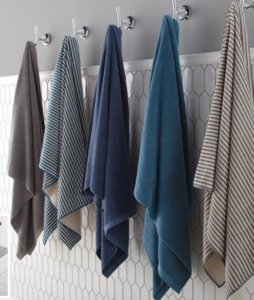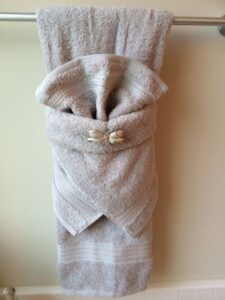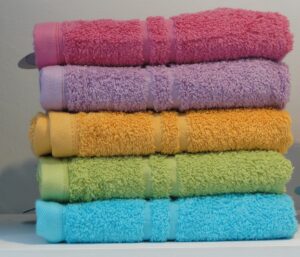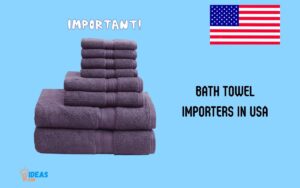How to Towel Bathe a Newborn? 14 Easy Steps!
Towel bathing a newborn involves gently cleaning your baby’s skin with a damp washcloth or sponge, while they are wrapped in a towel.
This method of bathing is often used for newborns who still have their umbilical cord stump attached, or for babies who find a full bath too stressful.
Towel bathing is a gentle alternative to a full bath for newborns. It allows you to clean your baby’s skin without overexposing them to water, which can dry out their skin.
It is also a useful method for newborns who still have their umbicidal cord stump, which needs to be kept dry until it falls off naturally.
Towel bathing is a simple and stress-free way to keep your newborn clean. It’s important to use a soft cloth or sponge and warm water to gently wash your baby’s skin.
Make sure to pay special attention to creases and folds in the skin, and always keep your baby comfortably warm during the process. Your baby’s skin will stay moisturized and healthy with this method.
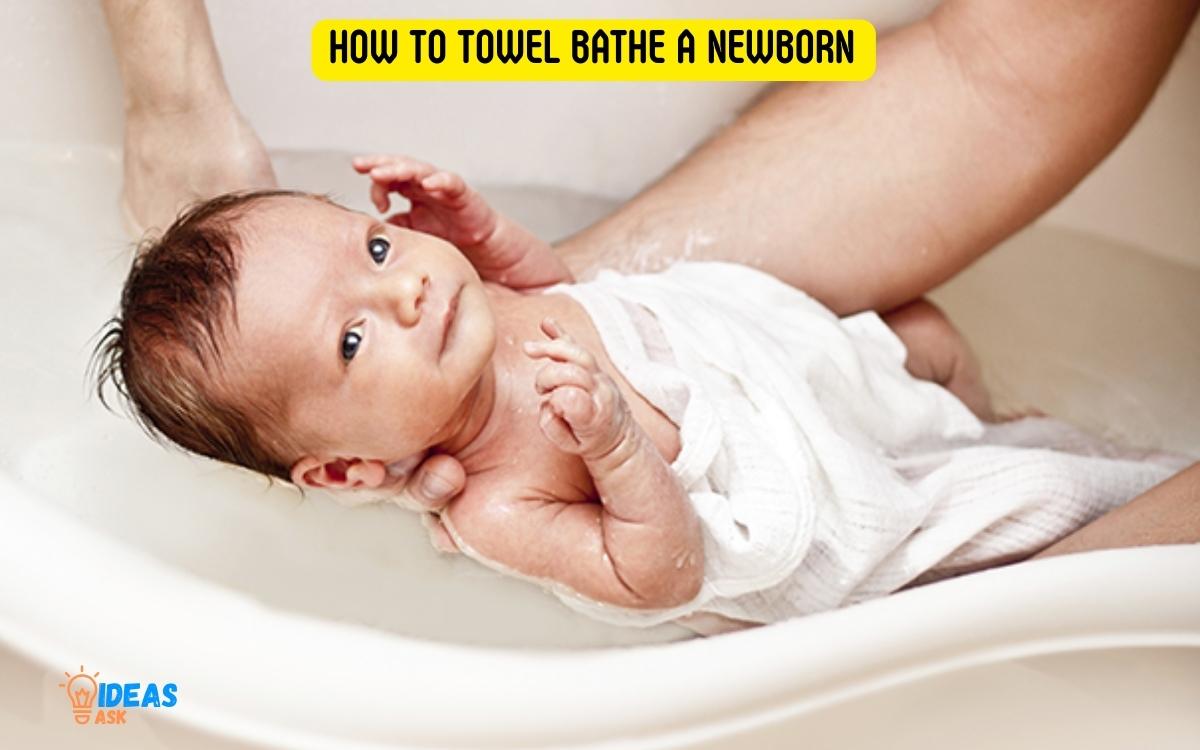
Key Takeaway
Step-by-Step Guide to Towel Bathe a Newborn
This step-by-step guide will show you how to towel bathe your newborn safely and effectively. Discover the best techniques for keeping your baby clean and comfortable without the need for a traditional bath.
Step 1: Ensuring Good Grip And Support For Your Baby:
- When towel bathing your newborn, it is crucial to have a secure grip and provide adequate support to ensure their safety and comfort.
- Hold your baby securely with one hand under their neck and head, and the other hand supporting their back and bottom.
- Use a non-slippery surface or a towel beneath them to provide stability during the bath.
Step 2: Wetting The Towel And Wringing Out Excess Water:
- Before starting the towel bath, wet the towel with warm water.
- Ensure the towel is evenly damp, but not dripping with excess water.
- Gently wring out any excess water to prevent it from dripping onto your baby’s face or body.
Step 3: Starting With The Face And Working Downwards:
- Begin by gently wiping your baby’s face with the damp towel.
- Use soft and soothing motions, starting from the center of the forehead and moving towards the cheeks and chin.
- Be extra careful around the delicate eye area, using clean corners of the towel to avoid potential irritations.
- Wipe away any milk or dirt that may have accumulated on your baby’s face.
Step 4: Washing The Face With A Gentle Touch:
- To wash your baby’s face, use a mild cleanser specifically designed for infants.
- Pour a small amount onto the towel and lather it gently.
- Starting from the forehead and moving downwards, apply the cleanser in soft, circular motions.
- Ensure you rinse off the cleanser thoroughly with clean water, using a fresh corner of the towel.
Step 5: Cleansing The Neck And Behind The Ears:
- Move down to your baby’s neck, gently wiping away any dirt or milk residue.
- Pay attention to the folds of the neck, using a gentle touch to avoid any discomfort.
- Similarly, clean behind your baby’s ears, as these areas can accumulate moisture and dirt.
Step 6: Moving On To The Limbs:
- Proceed to clean your baby’s limbs, starting with the arms.
- Use the damp towel to wipe each arm carefully, including the elbows and hands.
- Support your baby’s arm while gently cleaning the fingers and palms.
- Ensure all soap residue is rinsed off thoroughly.
Step 7: Cleaning The Arms And Hands:
- When cleaning your baby’s arms, pay attention to the folds and creases.
- Gently unfold and cleanse each fold to remove any trapped dirt or moisture.
- Be cautious around delicate areas such as the armpits.
- Clean the hands and fingers, ensuring you reach between the tiny fingers to eliminate hidden debris.
Step 8: Attending To The Legs And Feet:
- Move on to your baby’s legs, wiping them gently with the damp towel.
- Cleanse each leg thoroughly, focusing on the areas behind the knees and between the toes.
- Pay attention to any creases or folds on your baby’s legs to prevent irritation or rashes.
Step 9: Paying Attention To The Diaper Area:
- When towel bathing your newborn, it is essential to clean and dry the diaper area carefully.
- Wipe away any urine or feces using a gentle touch, being cautious around the genital area.
- Ensure you clean all creases and folds to prevent diaper rash and infections.
- Pat the area dry with a soft towel before putting on a fresh diaper.
Step 10: Using Gentle Strokes And Avoiding Harsh Rubbing:
- Throughout the towel bath, remember to use gentle strokes and avoid harsh rubbing on your baby’s delicate skin.
- Be cautious not to apply too much pressure or scrub vigorously, as this can cause discomfort or irritation.
- Maintain a calm and soothing approach to make the bath a pleasant experience for your little one.
Step 11: Drying Thoroughly To Prevent Irritation Or Rashes:
- After towel bathing, it is crucial to dry your baby’s skin thoroughly to prevent irritation or rashes.
- Use a soft towel to pat their skin gently, ensuring all areas are dry, especially within folds and creases.
- Pay extra attention to areas prone to moisture, such as the neck, armpits, and diaper area.
Step 12: Wiping The Back And Chest Area:
- To complete the towel bath, gently wipe your baby’s back and chest area.
- Ensure you reach all the way down to the lower back and cover the entire chest.
- Use the damp towel to remove any remaining dirt or moisture.
Step 13: Being Cautious Around The Umbilical Cord Stump (If Present):
- If your baby still has an umbilical cord stump, exercise caution while towel bathing in that area.
- Avoid direct contact with the stump, and gently clean around it with a clean, damp corner of the towel.
- Ensure the area is dry afterward to promote healing and prevent infection.
Step 14: Finishing With A Gentle Massage To Soothe And Relax Your Baby:
- To conclude the towel bath, consider giving your baby a soothing massage to promote relaxation.
- Use gentle, circular motions on their arms, legs, and back.
- Consider using baby-safe oil or lotion to moisturize their skin lightly.
- This gentle massage can provide a calming effect and help your baby unwind after the bath.
Understanding The Benefits Of Towel Bathing
Learn the benefits of towel bathing for newborns and discover how to safely and effectively bathe your little one using this gentle and soothing method. Keep your baby clean and happy with towel bathing techniques that promote bonding and relaxation.
Gentle Cleansing For Delicate Newborn Skin
- Towel bathing is a gentle and effective method of cleansing a newborn’s delicate skin.
- It involves using a soft towel and warm water to cleanse the baby’s body, avoiding harsh chemicals that can irritate the skin.
- The gentle wiping motion with a towel helps remove any dirt, sweat, or bacteria without stripping the skin’s natural oils.
- It is especially beneficial for babies with sensitive skin or conditions such as eczema, as it reduces the risk of irritation or flare-ups.
- The soft texture of the towel provides a soothing sensation, ensuring a comfortable experience for the baby during bath time.
Promotes Bonding And Relaxation Between Parent And Baby
- Towel bathing provides a wonderful opportunity for parents to bond with their newborn.
- The close physical contact during towel bathing promotes a sense of security and comfort for the baby, strengthening the parent-child bond.
- The skin-to-skin contact releases oxytocin, also known as the “love hormone,” which enhances feelings of affection and attachment.
- The gentle touch and soothing strokes with the towel can help calm the baby, creating a relaxing and peaceful environment.
- Bath time becomes a special bonding ritual that both the parent and baby can look forward to, fostering a deeper emotional connection.
Provides An Alternative To Traditional Bathing Methods
- Towel bathing offers a convenient alternative to traditional bathing methods, especially in situations where a full bath may not be feasible.
- It can be particularly useful during cold weather, when bathing newborns in water may not be ideal for temperature regulation.
- It allows parents to keep the baby clean and refreshed without the need for a bathtub or excessive water usage.
- This method of bathing can be easily done at any location, making it suitable for travel or when access to running water is limited.
- Additionally, towel bathing can be a practical option for parents who prefer to minimize the use of bathing products on their baby’s sensitive skin.
Tips And Precautions For A Successful Towel Bath
Towel bathing a newborn can be a delicate process. Follow these tips and precautions to ensure a successful bath: use a soft towel, keep the room warm, support their head and neck, wash gently, dry thoroughly, and monitor the water temperature to ensure it’s safe for your little one.
Towel bathing is a gentle and effective way to keep your newborn clean and refreshed. By following a few simple tips and precautions, you can ensure a successful towel bath experience for both you and your baby.
Using Mild And Gentle Baby Products:
- Choose baby-specific soap and shampoo that are formulated to be gentle on your newborn’s delicate skin.
- Opt for natural and fragrance-free products to minimize the risk of irritation.
- Avoid using adult or harsh soaps, as they can be too harsh for your baby’s sensitive skin.
Checking Water Temperature To Prevent Scalds Or Burns:
- Before starting the towel bath, ensure the water temperature is comfortably warm, around 37-38 degrees Celsius.
- Use a reliable bath thermometer to check the water temperature, as your perception of warmth may differ from your baby’s.
- Remember to always fill the bathtub or basin with water first, and then gently place your baby into it.
Keeping A Firm Grip On Your Baby At All Times:
- Make sure you have a secure hold on your baby throughout the towel bath.
- Support your baby’s head with one hand and use the other hand to clean their body.
- Be cautious of slippery surfaces and use a non-slip mat or towel to provide stability.
Prioritizing Your Baby’s Safety And Comfort Throughout The Process:
- Create a calm and relaxing environment for your baby by dimming the lights and minimizing distractions.
- Use soft, absorbent towels that are specifically designed for babies to keep them cozy and warm during the bath.
- Be gentle while washing your baby’s sensitive areas, such as the face, genital area, and folds of the skin.
Being Observant For Any Signs Of Discomfort:
- Pay attention to your baby’s cues and promptly address any signs of discomfort, such as crying, fussiness, or excessive squirming.
- If your baby does not seem to enjoy towel baths, you can try alternative bathing methods, such as sponge bathing, until they feel more comfortable.
Remember, towel bathing is an enjoyable bonding experience and an opportunity to nurture your newborn.
By following these tips and precautions, you will help ensure that your baby’s towel bath is a safe and enjoyable experience for both of you.
Conclusion
Towel bathing a newborn is an essential skill that every parent should learn. It provides a gentle and effective way to keep your baby clean and comfortable.
By following the steps outlined in this post, you can ensure a safe and enjoyable towel bathing experience for both you and your little one.
Remember to gather all the necessary supplies before starting the process, including a soft towel, warm water, mild baby soap, and a diaper.
Take your time and be gentle with your baby’s delicate skin. Keep the water temperature comfortable and maintain constant supervision throughout the bath.
Towel bathing not only helps in maintaining good hygiene for your newborn but also promotes bonding and relaxation. It’s a special time for both you and your baby to connect and create lasting memories.
So, embrace this opportunity to provide your precious bundle of joy with a soothing and enjoyable towel bathing experience.
With practice and care, you will become confident in this essential parenting skill. Enjoy these precious moments with your little one!



